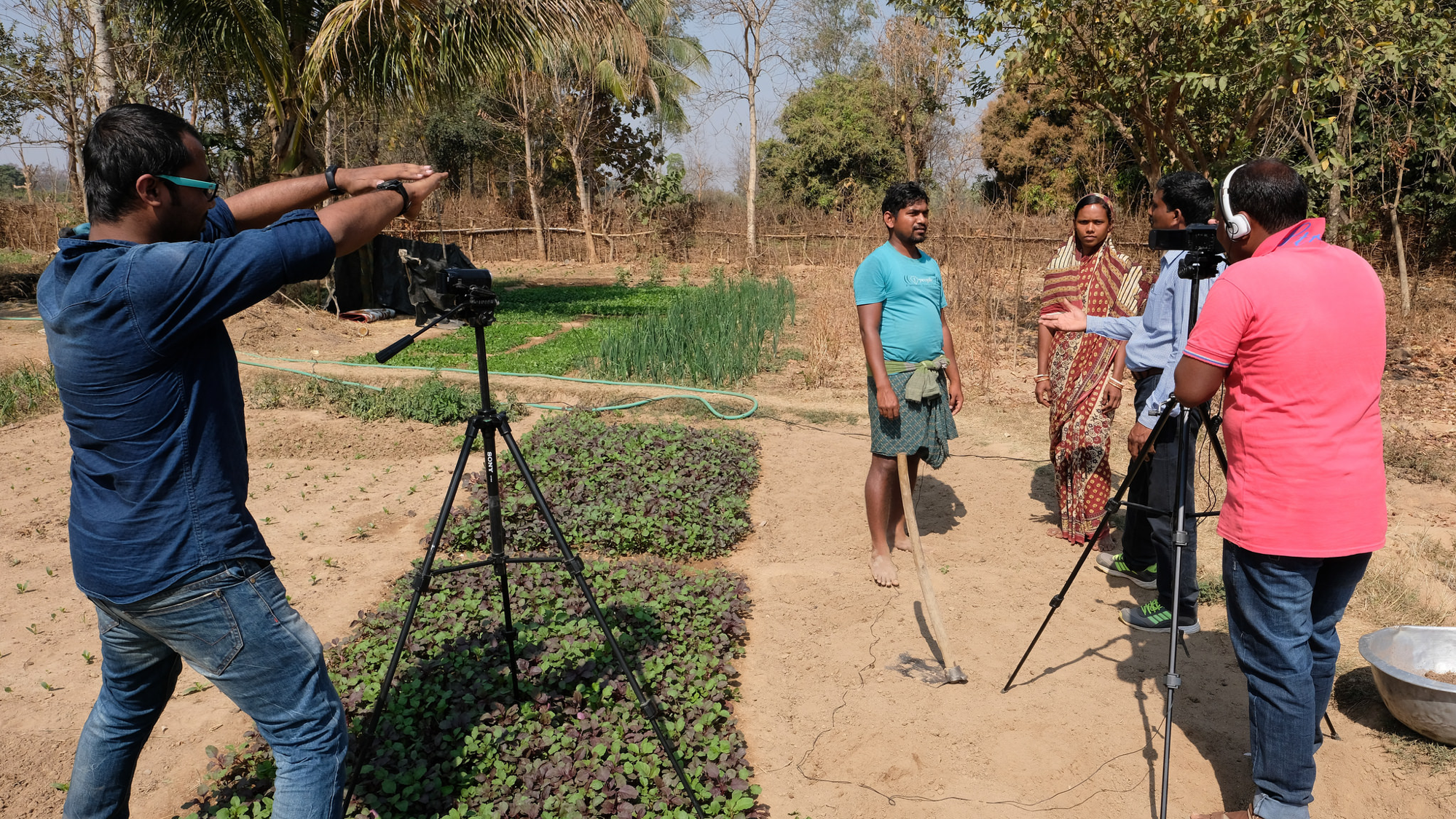Over the course of this fieldwork, we produced messages focused on how to grow appealing healthy foods.
Overview
My role: With local partners, we guided the production of local community videos, which were based on key practices that we identified through formative research. We concept tested one video with local community members, revised the video based on viewer feedback, and then applied these lessons to subsequent videos.
Areas of investigation: Food production practices of the household + food preparation practices of the household + food purchasing practices in local markets.
Project goal: Increase uptake of key behaviors that improve community member health in rural India.
Research tools
Everything that we did in this project was based on our formative research and conducted alongside our partner organizations.
Concept testing: The participants of the concept test were selected by a local partner, and were determined to be representative of viewers of community videos. The opinions of the concept test determined whether a community video pilot resonated with our target audience.
Focus group discussions + interviews: Participants of focus group discussions and interviews further informed the topics of our videos. These individuals were mentors within local communities and had lived in their community for, in most cases, their entire lives. We see the relationships that this individual holds with her or his fellow community members as the key to the success of our project. Our focus group discussions and interviews provided insights into how to show key concepts.
Seasonal calendar: The seasonal calendar determined when to show each video. It was integral that our videos were sequenced with the seasons. For example, if a video focused on how to plant Indian spinach, we referred to our seasonal calendar to determine when families would be preparing to plant this crop. Seasonal calendars can be tricky, as you must be intimately familiar with the context. If you’re off by one month, or even two weeks, you may jeopardize the success of your project. We worked closely with our local community partners to ensure that we got this right.
Learning
Findings: The content of the video resonated with community members. The viewers of the video accurately recalled key messages and felt that the practices shown by their fellow community members were feasible for them to do, too.
Surprise: There are three words for ‘manure’ in the local language used during our videos, and each word indicates a specific variety. We worked with local partners to ensure that manure referenced in each video was accurate.
What happened after? Upon returning to Washington, DC I continued to collaborate with our partners producing and sharing these community videos. Our partners continued to draft storylines while I reviewed key messages in these storylines to ensure technical accuracy.
“A lot of the things that we do, we do without realizing the effect on nutrition.”
Reflections
Communication is an art. This work was a product of patient and passionate partnership. Together we designed stories that highlighted key practices, were scientifically accurate (getting that shot and script just right!), and shared simple memorable messages.
Recording a community video
Community video team photo



